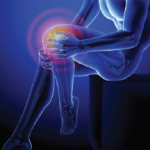About half of patients with rheumatoid arthritis (RA) have dry eye, as well as about half of lupus patients. “As rheumatologists, I’m convinced you can help your patients with dry eye,” Dr. Rosenbaum said.
The first step: Assess the patient’s medications. Antihistamines and medications for sleep, pain or depression all contribute to dry eye. “Those medicines interfere with our ability to measure tear production,” he said.
The differential for dry eye includes autoimmune disease, aging, effects of medications, HIV, surgery consequences, alcoholism, anxiety and Meibomian gland disease.
A humidifier in the bedroom, or even just a pan of water, can help. And replacing tears is more difficult than you might think. “Tear film is complicated,” Dr. Rosenbaum said, with water from the lacrimal glands, mucus from Goblet cells and oil from the Meibomian glands. “If the balance is off, the tear isn’t right. And to replace the tear, we need all three components, which no one has quite mastered.” Many tear film replacements contain a preservative, which can be toxic to the cornea, so preservative-free artificial tears are better for those needing to use them frequently.
Autologous serum, in which patients go to a blood bank that makes a sterile serum, is “arguably the most soothing replacement we have right now,” Dr. Rosenbaum said.
Two medications interfere with the immune response and are FDA approved to treat dry eye: topical cyclosporine and lifitegrast, a small molecule that interferes with leukocyte function associated antigen 1 and intercellular adhesion molecule 1. “Both have minimal ability to increase tear production,” Dr. Rosenbaum said. “It shows how impoverished we are, really, in terms of our therapeutic armamentarium for dry eye.”
Scleritis & Episcleritis
Scleritis, another cause of redness, is associated with RA, vasculitis (especially granulomatosis with polyangiitis), inflammatory bowel disease and other autoimmune disorders. Episcleritis, which involves the episclera that sits on top of the eye’s sclera and is typically benign, is scratchy while scleritis is painful; is short-lived versus persistent; and, upon use of phenylephrine drops, involves vessel blanching compared to no blanching in scleritis.
When evaluating patients with scleritis, a thorough history is crucial, and Dr. Rosenbaum said ANCA testing can prove informative in cases without a specific systemic association identified.
His first step in treatment includes a brief trial of an oral NSAID, to which roughly 15–20% will respond. If that doesn’t help, he moves to oral corticosteroids, immunosuppressives and treatment of underlying disease with biologics. He said he avoids periocular steroids because in a subset of patients the sclera can thin, bringing a risk of perforation.


